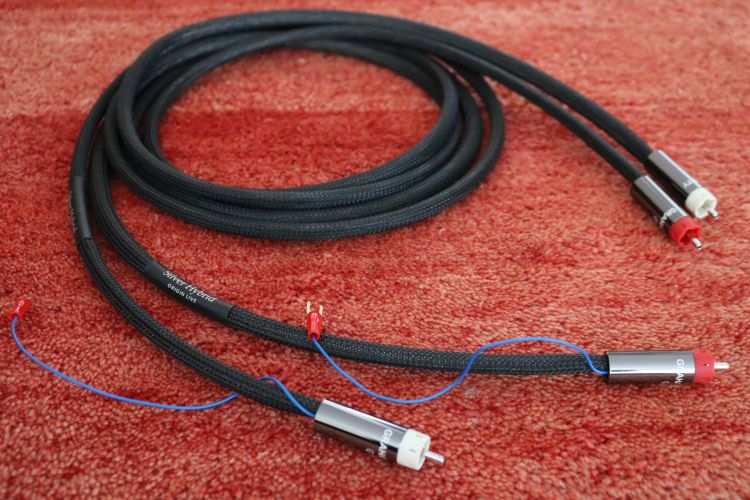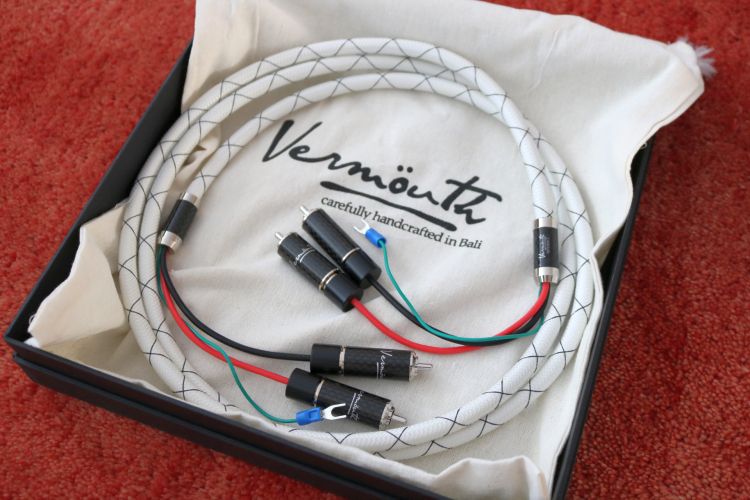
Review samples provided by Vermouth Audio
Retail prices:
Cinch-Cinch – $422 (+ tax)
DIN-Cinch – $394 (+ tax)
Extra length per meter – $42 (+ tax)
Two versions: DIN-Cinch and Cinch-Cinch
In addition to the already very complete assortment of cables that Vermouth Audio offers, the Balinese manufacturer recently introduced a new line of Reference Cables, specifically for use with turntables. Available in a cinch-cinch or DIN-cinch termination, they are universally applicable. For instance, while my Origin Live turntable will require the familiar DIN termination, the Thorens turntable requires regular cinch connectors.
These cables are so new that, outside of two images, there is no info on the Vermouth website just yet.
As with all Vermouth cables, the Reference Phono cables are well-made, with nice solid metal endcaps and the same high-quality connectors as on the other Reference cables. In comparison to those cables, two aspects stand out. First, the phono cable is a lot thinner, and second, both left and right signals travel through the same sleeve. The cable is very supple yet nicely weighty and it looks and feels much more expensive than it is.
Review Context
The Reference Phono Cables will be used in two different systems in which they will be compared to the Origin Live Silver Hybrid tonearm cable and interlink as well as two other Vermouth interlinks. The turntables used are the Origin Live Calypso mk4 with Vira Aidas Rainbow MC cartridge feeding the CH Precision P1 phono stage, and the Thorens TD1601 with Audio Technical AT150mlx MM cartridge feeding the SW1X LPU-1 tube phono stage.
Listening – Origin Live turntable
The Origin Live turntable has been used with the recommended same-brand Silver Hybrid DIN-cable from the moment that I first got it. I have experimented with the cable between phono stage and preamp but, so far, not with the DIN-terminated tonearm cable. But there’s no time like the present, right?

Between the phono stage and Ayon Stealth preamp, I use either the AudioQuest Water interlink or the Origin Live Silver Hybrid. The former provides a very robust and earthy sound albeit with less resolution, treble openness and air than I would like. Sometimes, the turntable (with the Rainbow cartridge, at least) can also sound a little too rigid and sometimes over-controlled. One could argue that the ViRa Aidas cartridge may be the main culprit but that is a discussion for another review. In any event, the Water interlink is itself also on the dry side, and thus, this sparked a quest for finding a more fluid-sounding cable.
So far, this resulted in getting a second Origin Live Silver Hybrid cable built the same as the tonearm cable but terminated with cinch connectors on both sides. As it forms a natural extension of the tonearm cable, one could assume that it forms a perfect synergy, and in a way, it does. It perfectly enhances the tonearm cable’s superb resolution and refinement which are some of analog’s greatest assets but, alas, it doesn’t have the robust ballsiness of the AudioQuest. With none of these two cables being entirely ideal for my circumstances, I keep swapping between them. As imperfect as it is, this provides the backdrop for this review.
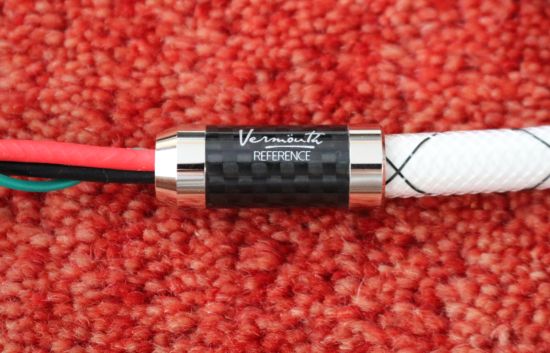
The Vermouth listening starts with the Water interlink between the phono stage and preamp. Arguably, since this connection concerns line-level signals (not cartridge signals), I could be using the Vermouth Reference interlinks which perform on a higher audiophile level than the AudioQuest Water. However, as the relativity of all matters audio has it, this combination of components requires a cable that is less strict and revealing and more forgiving, to obtain not only technically correct but also musical results.
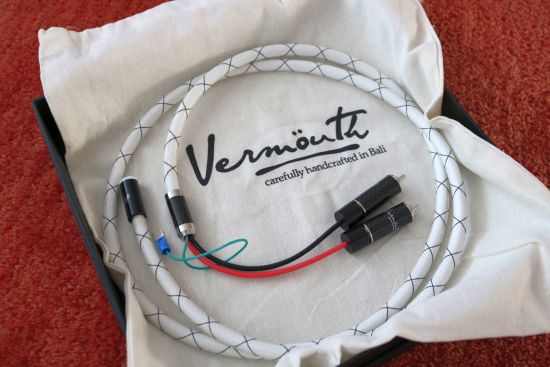
DIN cable
Leaving the Water interlink between the phono stage and preamp and after swapping the Origin Live DIN tonearm cable for the Vermouth Reference DIN tonearm cable, I get flashbacks to the sound of the Vermouth Black Pearl MkII interlink. Just as with that cable, the sound of the tonearm cable is sweet, lush and refined yet upbeat and energetic with a full tonality, powerful, slightly round bass and great rhythmic qualities.
The Origin Live tonearm cable is a little airier still, more refined and more transparent but it is significantly leaner in the bass and lower midrange. Less beefy, as the English would say. Also, it can lack a bit of tension and attack in the upper bass and lower midrange which can render some recordings less urgent, less edge-of-seat than I would like them to be. But that’s why I counter-balance it with the AudioQuest cable between the phono stage and preamp.
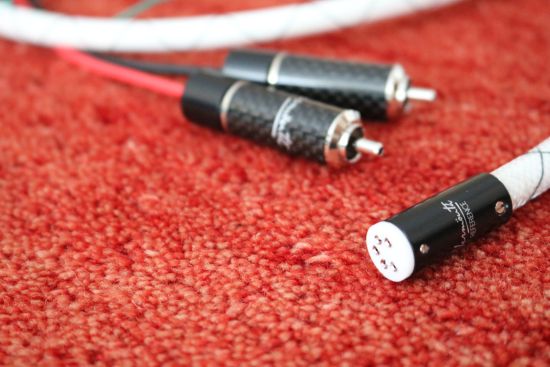
Another interesting difference is in the way that the soundstage takes shape. While there is absolutely nothing amiss with the Vermouth cable’s soundstaging abilities, the Origin Live cable does project a wider and deeper bubble in which the sounds are more obviously positioned in different layers within the soundstage. This stems from a higher level of accuracy which adds an aspect of fascination to the proceedings.
Meanwhile, the Vermouth tonearm cable makes a very tempting proposition and with its creamier and fuller presentation is, overall, actually a more synergistic match in my system than with the two Silver Hybrid cables in place. The Vermouth cable sounds great with all recordings and is forgiving for mediocre pressings, retrieving enough detail while filling in any overt leanness and reducing sibilance.
So long as I have the very solid and robust-sounding AudioQuest in place as a compensator between phono stage and preamp, however, I do ultimately prefer the Origin Live tonearm cable for its more refined and differentiated approach.
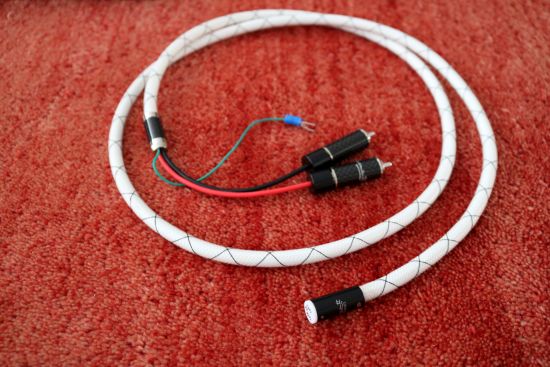
In an absolute sense and in terms of deficits, the Origin Live cable is a little lean and could do with more tension and propulsion while the Vermouth adds some fullness and is less articulate and revealing. Judged in isolation, I think it is fair to say that the Origin Live cable performs on a higher audiophile level but there’s no denying the attractiveness of the Vermouth’s fuller and sweeter sound. Horses for courses? I believe so. Ultimately, the Origin Live cable is also not perfect (what cable is?) and it requires teaming up with a very robust-sounding cable to achieve a good balance.
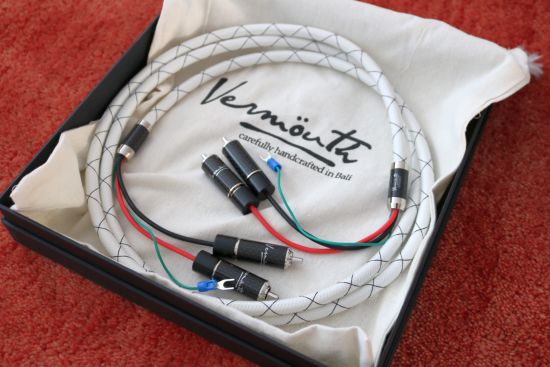
Cinch Cinch cable
Time to move on to the other version of the Vermouth Reference Phono Cable, the one that is terminated with cinch connectors on either side. While intended to carry low-level pick-up cartridge signals, its termination also allows it to be used elsewhere. And so, still, in the Origin Live setup, I used it between the phono stage and the preamp.
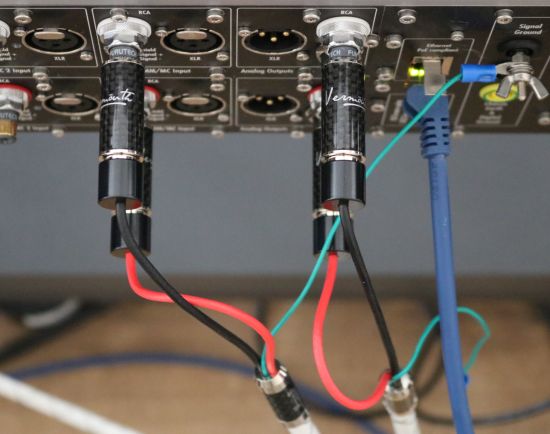
Starting with the Vermouth Reference DIN Phono Cable connected to the tonearm and the AudioQuest between phono stage and preamp, I proceeded to swap the AudioQuest for the Vermouth Reference Phono cable. With the two Vermouths in the system, surprisingly, even though the AudioQuest is particularly sonorous and earthy, not much solidity is lost. The sound does become a little warmer, still, than with the single Vermouth cable and a little bit less incisive in the upper bass but, overall, the presentation remains full-bodied, and the sense of propulsion is intact. Along the way, the system also becomes more forgiving, especially making lean-sounding records (of which I sadly have a lot) sound just the right amount fuller. It’s not the most articulate or precise rendition but the two Vermouth cables work well together to provide a warm and smooth, but otherwise well-balanced and involving sound.
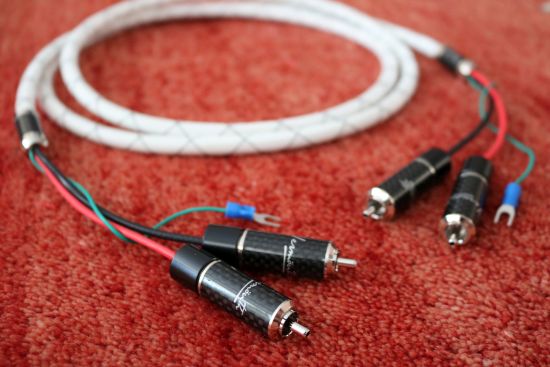
Leaving the Vermouth Cinch-Cinch cable in place between the Phono stage and preamp and placing back the Origin Live DIN cable indeed reaffirms that cable’s superiority in terms of transparency and precision. More interestingly, like the AudioQuest, the Vermouth cable downstream manages to compensate for the Origin Live cable’s leanness with nice full bass and great propulsion, but unlike the AudioQuest, this does not come along with any darkness or dryness. Admittedly, the smoother Vermouth cable is not quite as incisive and expressive as the AudioQuest but the overall balance is much more to my liking. And most importantly, the presentation is captivating and highly enjoyable.
